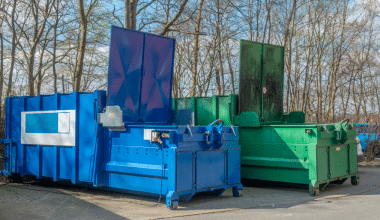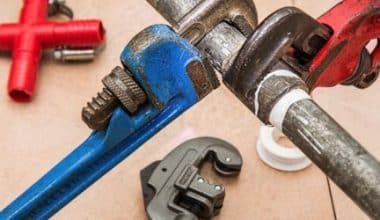Have you ever seen those giant half-cylinder steel buildings and wondered “What are those things?” Well, friend, you’ve spotted a Quonset hut! These arched steel structures have been around for over 75 years and chances are you’ve driven past one without even realizing it.
Here you will find the full lowdown on Quonset huts – what they are, why they’re so popular, and how they can be a versatile, affordable, and rugged building solution for your property. Steel huts have served all kinds of purposes over the years, from military barracks to warehouses to unique homes. By the end, you’ll know everything you need to decide if a Quonset hut kit is right for your next building project!
A Quick Look Back
First, a brief history lesson. Quonset huts were developed during World War II to provide lightweight yet sturdy shelters for troops that could be quickly constructed. The first Quonset hut was manufactured in 1941 out of steel and modeled after the Nissen hut used in World War I. After the war, surplus Quonset huts were sold off for civilian use as storage units, garages, workshops, and even houses!
The name “Quonset” comes from their original construction site at Camp Endicott at Davisville, Rhode Island at a place called Quonset Point. These versatile steel arch buildings were invaluable for the military and later for all kinds of agricultural, industrial, and residential applications.
Quonset Hut Basics: An Iconic Semicircular Steel Structure
When you picture a classic Quonset by Steel Hut, you’re probably imagining a long, half-cylinder steel structure with a curved roof – that iconic arch shape. The frame consists of a series of steel ribs that interlock to form sturdy arches over a space with no interior columns. This creates a structure that is strong, stable, and provides clear span interiors without support beams getting in the way.
The arched rib sections are typically made of galvanized steel which protects against corrosion. Quonset huts usually have straight side walls and steel endwalls that enclose the structure. Many also have steel roll up doors built in to accommodate vehicle access. The curved steel construction allows Quonset huts to withstand heavy snow loads that cause other structures to collapse.
Standard Quonset hut widths range from 20 to 40 feet, but lengths can be customized. The most common models are the A-frame, X-frame, and U-frame styles, but there are many variations. Building lengths can range from just 20 feet up to hundreds of feet!
While we’re used to seeing the iconic half-cylinder shape, Quonset huts can also have modified arch designs with lower sidewalls to accommodate specific needs. This versatility in size and design makes them suitable for all kinds of applications.
Why Choose a Steel Arch Building? Key Benefits of Quonset Huts
There are many good reasons Quonset huts have remained popular for over seven decades! Here are some of the top benefits that make them a smart choice for storage, shelter, and workspaces:
Strength and Durability: The steel arched rib construction creates an incredibly strong structure that holds up well to wind, snow, and other elements. The galvanized steel resists corrosion and rust. With minimal maintenance, a Quonset hut can easily last 50-70 years or longer! Now that’s durable.
Low Maintenance: Once it’s up, a Quonset hut requires very little ongoing maintenance unlike wood structures. The sturdy steel and lack of a frame structure means you’ll save time and money on repairs over the years.
Clear Span Interiors: No support beams or columns interrupt the open interior span which provides maximum usable space. You can customize the layout without limitations.
Affordability: Compared to conventional buildings, Quonset huts provide cost-effective structures both upfront and over their lifespan. Installation is quick and inexpensive too.
Versatility: With flexible sizing and layouts, Quonset huts can serve all kinds of purposes from storage for warehousing to unique living spaces to retail shops.
Weathertightness: Steel huts prevent leaks while effectively shedding rain, snow, and wind.
Ease of Construction: The prefabricated rib sections make Quonset huts simple DIY projects or quick professional installs. No complex construction skills needed!
Energy Efficiency: Their closed steel construction allows for good insulation against temperature extremes and lower heating/cooling costs.
Common Uses and Applications of Quonset Huts
The versatility of the Quonset hut design means they can serve all kinds of practical functions for residential, agricultural, commercial, and industrial applications. Here are some of the most popular uses of Quonset huts:
Storage: Providing spacious covered storage for equipment, vehicles, inventory, and anything else you need to store safely. The interiors accommodate both large and small items.
Workshops: The open span interior is ideal for setting up workshops for hobbies, arts, mechanical work, and other projects with room for equipment.
Garages: Use as a garage for vehicles, with built-in roll up doors for easy access. Quonset huts keep vehicles protected from weather elements.
Barns: Perfect for agricultural use as barns, stables, and shelters for livestock, equipment and feed/grain storage.
Retail Spaces: The simplicity of Quonset huts makes them easily adaptable for retail shops, concession stands and outlets.
Offices and Studios: Steel is a popular material and the construction provides quiet, private spaces for office work or artists’ studios.
Recreation: Gymnasiums, indoor courts, and athletic facilities benefit from the wide open interiors.
Emergency Shelters: Quickly erected Quonset huts provide effective temporary shelters and storage in crisis situations.
Planning Your Quonset Hut: Key Factors to Consider
To make sure your Quonset hut perfectly fits your needs, there are some important factors to think through:
Intended Use: How you plan to use the structure determines what size and layout works best. Measure your equipment or vehicles and calculate required space.
Available Space: Check that you have adequate room on your property for the Quonset hut length and clearance. Consider ease of access too.
Codes and Permits: Your local building department can advise on codes and required permits based on your plans. This prevents issues down the road.
DIY vs Professional Install: Larger Quonset huts benefit from professional assistance, but DIY assembly is definitely doable. Factor this into your budget.
Climate Considerations: Snow load capacity and wind resistance should be sufficient for your area’s weather. Consult the manufacturer.
Insulation Needs: Consider adding insulation packages if you need temperature regulation for interiors.
Aesthetics: Pick exterior finishes that complement surroundings. Many customization options are available.
Future Expansion: Size your Quonset hut to allow for potential growth down the road as needs change.
Quonset Hut Sizes: Choosing the Right Model
There are fine examples of Quonset huts all over the country. And one of the great things about Quonset huts is you can get just the right size building for your needs. Widths typically range from 20 to 40 feet, but any length is possible to create the required space. Common models include:
A-Frame: The most basic Quonset hut style with straight sidewalls, best for smaller structures.
X-Frame: Similar to A-frame but with angled endwalls for enhanced durability.
U-Frame: Offers even more heavy load capacity with additional ribs and stronger framing.
Q-Frame: One of the most popular models – minimizes materials while maximizing strength.
R-Frame: Has a rounded profile ideal for areas with heavy snow loads.
Consult a qualified Quonset hut supplier to determine the ideal size and model to suit your purposes. They can customize the structure based on your requirements. Bigger is not always better – measure your actual space needs first.
Accessories and Add-Ons for Your Quonset Hut
The great news is Quonset huts can be outfitted with all kinds of optional accessories and add-ons to enhance functionality:
- Doors: Choose roll up doors, sliding barn doors, or standard entry doors. Position them for optimal access and security.
- Windows: Add natural light with window inserts placed along the side walls or end walls.
- Insulation: Protect against temperature extremes by adding insulation inserts.
- Interior Fixtures: Install workbenches, tool racks, cabinets, lofts, and shelving as needed.
- Exterior Finishes: Customize the look with color finishes, faux brick, or wood siding.
- Climate Systems: Add ventilation, air conditioning, or heating systems.
Many accessories can be installed after construction too as needs change. Get creative with customizing your Quonset hut!
Constructing Your Quonset Hut: The Installation Process
The process of assembling a Quonset hut kit is straightforward once the materials have been purchased. The curved rib pieces come pre-punched for simple bolt-together assembly. First, the site is prepared and the concrete foundation constructed. Next, the steel arch rib sections are laid out in their numbered sequence and bolted together to form the iconic arched shape.
The straight sidewall sheets are then added and secured in place, followed by attachment of the endwall frames which must be tightly fastened. Finally, doors, windows and other accessories can be installed as desired to customize the Quonset hut. Smaller structures can typically be put together over a weekend as a DIY project, while larger buildings may require professional crews with lifting equipment for the frame sections. Either way, the prefabricated steel design allows for quick and easy construction.
The Final Words
As you can see, Quonset huts are ideal versatile structures that can serve all kinds of purposes thanks to their rugged steel construction. They go up quickly, resist the elements, require little maintenance, and provide spacious interiors. For an affordable, durable building that meets your needs, a Quonset hut is hard to beat!
With some thoughtful planning and design considerations, a Quonset hut kit can provide the perfect storage space, workshop, retail store, barn or whatever you need. Hopefully this overview gives you a better idea of what Quonset huts have to offer. They’ve come a long way from their military origins to become rugged multipurpose shelters suitable for so many applications.






